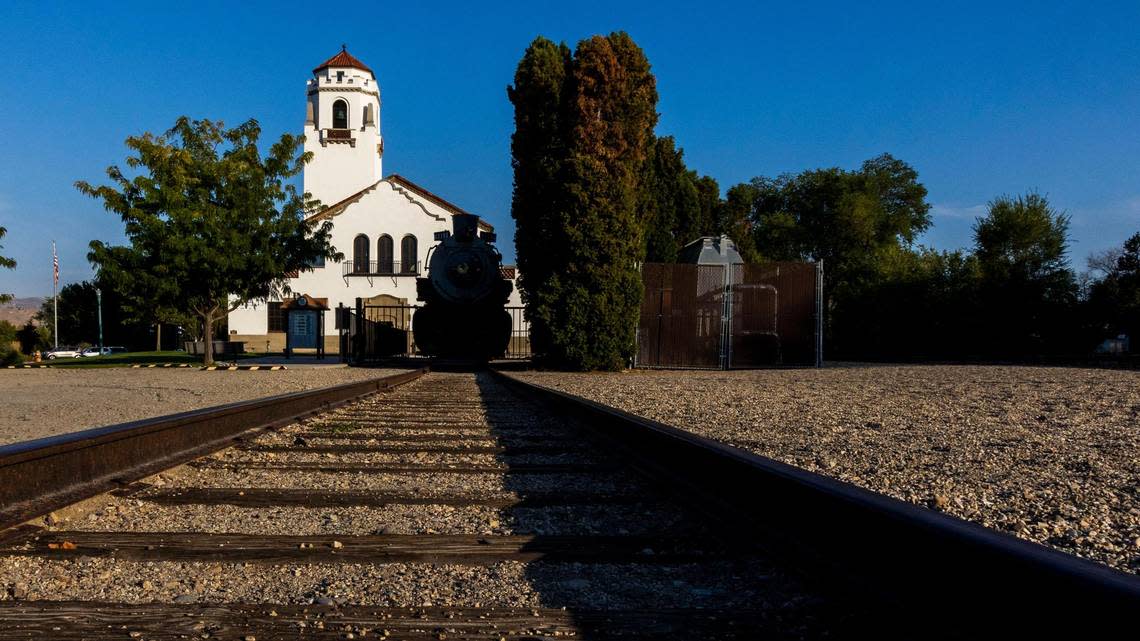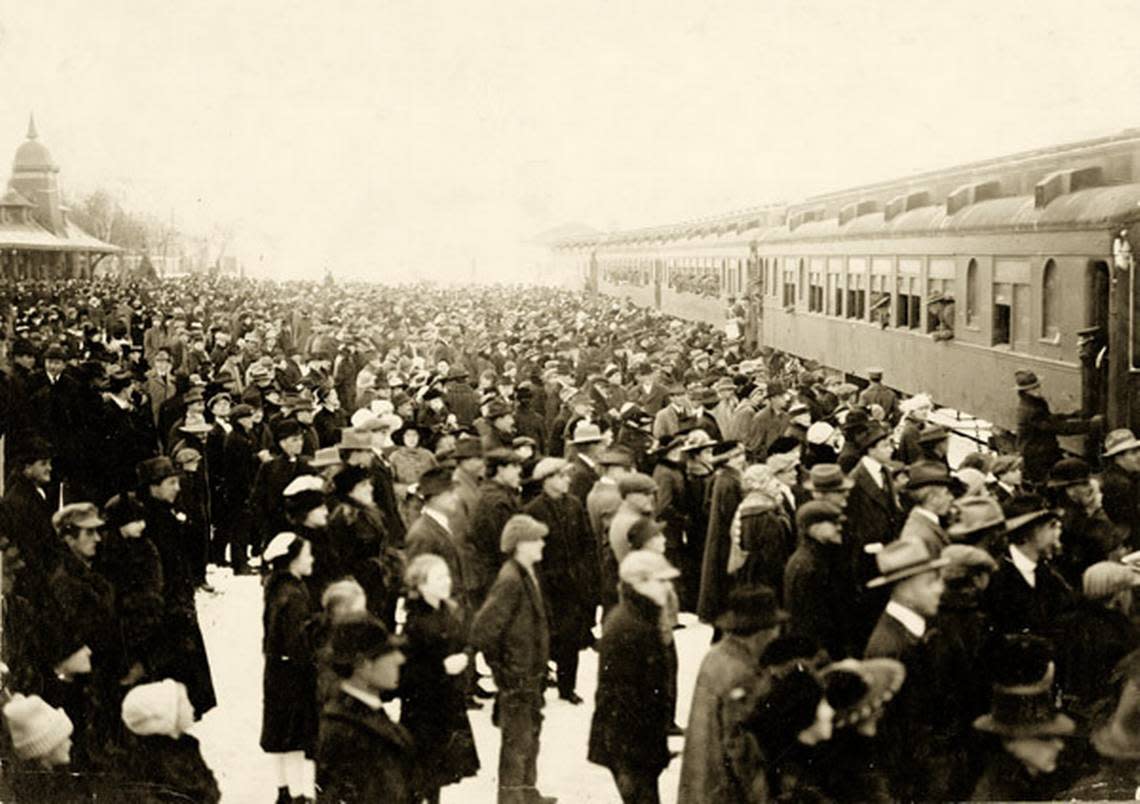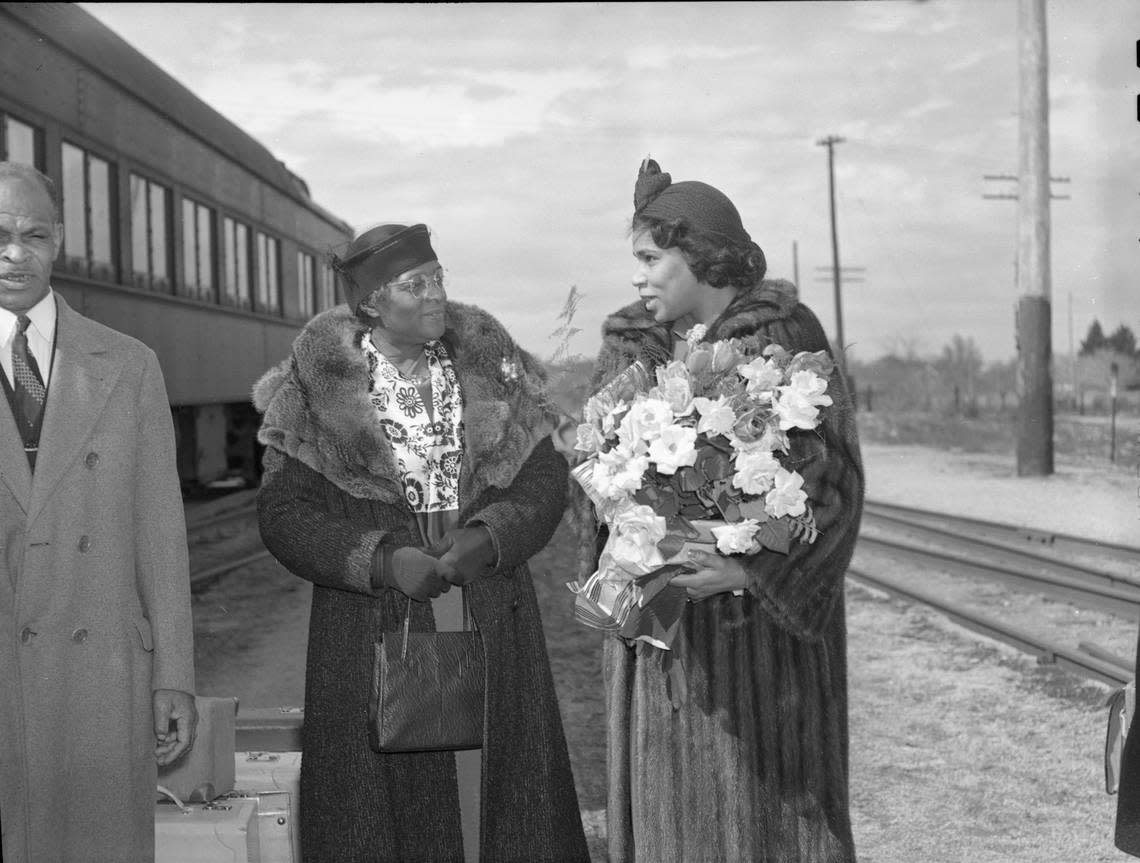Could Amtrak return to Boise? Idaho leaders want rail service to Salt Lake City, Seattle
For the first time in more than a quarter century, momentum for train lines in Western U.S. states may be on the fast track.
Idaho’s elected officials have renewed their efforts to bring passenger trains back to the Mountain West, after Congress passed the federal infrastructure bill last year with bipartisan support. In November, President Joe Biden signed into law the $1.2 trillion spending package, which includes major funding to expand the nation’s passenger rail network.
In recent weeks, Boise and other state leaders met with officials from Amtrak, the U.S.’s heavily subsidized, semi-public rail company, to discuss the possible return of the former Pioneer Line passenger rail line that ran between Seattle and Chicago, with stops in Portland, Boise, Salt Lake City and Denver. The route ran for 20 years before it was discontinued in 1997 as a casualty of federal budget cuts, in part because of low ridership. Passenger trains served the region for decades before as well, ahead of Amtrak’s launch in 1971.
In August, meetings with Amtrak took place in Boise and Pocatello, with Treasure Valley cities and members of Idaho’s federal delegation then sending a letter to the Federal Railroad Administration asking that the shorter leg between Salt Lake City and Boise be considered for a future route as well.

Elaine Clegg, Boise’s City Council president, has for years been advocating for the return of rail service through the historic Boise Depot. She told the Idaho Statesman that while Amtrak has long left huge swaths of the Mountain West out of its future service plans, that may now be changing as the federal government injects previously unheard of amounts of money into the nation’s rail.

“They are recognizing that this is maybe a once in a lifetime opportunity to reestablish rail in ways in the United States that we haven’t seen since the 1960s,” Clegg said.
The infrastructure law, formally known as the Infrastructure Investment and Jobs Act, includes tens of billions of dollars in funding for the nation’s passenger rail. Some of those dollars are meant to add rail service to areas outside the Northeast, where Amtrak operates the bulk of its service.
“About a quarter of the people in the United States live in rural places,” Clegg said. These areas have “been contributing to Amtrak over the years (and) haven’t seen any service from it.”

Prior funding call went unanswered. New law shifts ground
Biden, known for riding Amtrak to Washington, D.C., during his three decades in the U.S. Senate, earning him the nickname “Amtrak Joe,” has championed the massive infusion of money into the nation’s passenger rail system. The new law expands funding for existing rail programs while also creating new programs to expand service.
Specifically, the infrastructure package guarantees $66 billion toward rail projects — the largest investment in Amtrak in more than 50 years, according to the administration. More than half of that funding, $36 billion, is reserved for expansion and upgrades of passenger service lines between cities.
The law directs another $36 billion in discretionary spending toward Amtrak’s capital and operational needs, including $7.5 billion more for intercity network development, which could entail reestablishing the Pioneer Line or some derivative to help restore train travel through Southern Idaho. In total, the law commits as much as $102 billion over the next five years toward strengthening and modernizing the nation’s rail system.
Yet another $15 million is designated for studying discontinued long-distance Amtrak routes, defined as 750 miles in distance or longer. The law emphasizes prioritizing those routes terminated after April 1971, with results of that study due to Congress by November 2023.
“As a discontinued Amtrak long-distance route, the Pioneer Line will be evaluated as part of this study,” William Wong, a Federal Railroad Administration spokesperson, told the Statesman by email. “A website for the study will be launched in the coming weeks, and, currently, FRA is meeting with stakeholders as it prepares to launch it.”
Idaho Republican Sens. Mike Crapo and Jim Risch voted in favor of the infrastructure law and, according to their respective spokespeople, also are longtime supporters of the return of train travel through several of the state’s most populous cities. Both also signed the interest letter sent to the FRA earlier this month, along with 30 other Idaho state and local officials, including Gov. Brad Little, Boise Mayor Lauren McLean and 11 other city mayors.
“Idahoans and residents of the Mountain West would benefit from exploration into providing more reliable, safe and affordable means of transportation,” Crapo said in a written statement to the Statesman. “An intercity rail service would add another element of healthy transportation infrastructure aimed at promoting economic growth and improving personal mobility and quality of life.”
Meanwhile, U.S. Reps. Mike Simpson and Russ Fulcher, R-Idaho, each voted against the federal infrastructure package. Simpson previously told the Statesman that he supported investments in infrastructure needs, but the funding sources in the Democratic administration’s infrastructure package did not cover the costs of the entire bill, which led him to vote against it.
“Any serious attempt at a long-term bipartisan infrastructure bill would include comprehensive funding mechanisms and not be tied to unrelated bills,” Simpson said in a statement to the Statesman in August.
But Simpson, whose congressional district includes part of Boise and East Idaho, signed onto the recent passenger rail interest letter and has always supported the return of the Pioneer Line, an office spokesperson said. Fulcher so far is noncommittal.
“Congressman Fulcher will assess the details of any proposal regarding the Amtrak Pioneer Line on its merits,” Daniel Tellez, Fulcher’s spokesperson, told the Statesman by email. “Any proposal Rep. Fulcher considers will have to be fiscally sound and not further inflame our inflation crisis.”

‘The best time for starting new service’
Crapo previously worked with fellow U.S. Sen. Ron Wyden, D-Oregon, to commission a study in 2009 about restoring daily service of the Pioneer Line. At that time, the one-time capital costs to revive the route between Salt Lake City and Seattle, with stops in Nampa, Boise and Pocatello, were estimated at $382 million, and up to $493 million for longer-distance alternatives. Annual operations costs were estimated at $36.6 million to $46.2 million.
Coupled with an estimated 102,000 passengers per year for the Salt Lake City to Seattle option, which would generate $11.6 million in revenue, the line was expected to operate annually at no less than a $25 million loss. The financial viability of such a plan was left to federal and state policymakers to decide, though potential funding sources were never identified. For decades, some members of Congress have pushed to cut Amtrak’s funding, arguing that the system should instead turn a profit.
Last year, Amtrak released its 15-year network expansion strategy, which did not include new service lines in Idaho. The plan, however, intended to be a starting point, said Marc Magliari, an Amtrak spokesperson.
With the new pot of money available through the infrastructure law, the agency is encouraging cities across the U.S. that are seeking passenger rail service to speak up and be included in the potential expansion, he said. Although the Pioneer Line was mothballed a quarter century ago, the feasibility of such a route has greatly changed in one of the nation’s fastest growing regions.
“That was 1997, and if you look at the population growth in Salt Lake City and Boise, and maybe Pocatello, it’s a different world today,” Magliari told the Statesman by phone. “It is the best time for starting new service in more than 50 years.”
Some of the biggest proponents of reestablishing passenger trains in Idaho are leaders in Boise.
The Boise City Council passed a resolution in June 2021 in favor of returning rail service, and the city is also a partner in the Greater Northwest Passenger Rail Working Group, which advocates for bringing trains back to the region.
“All across our city and the region, people are excited about rail,” McLean said last week on Twitter. “We’ll continue to find and build the partnerships we need to bring the Pioneer Line back.”
Amtrak sets net-zero emissions goal by 2045
One program Boise city leaders have emphasized is the Corridor Identification Program, which is designed to identify previously operational service routes or new routes that are less than 750 miles in length.
Boise also has set goals to cut its carbon footprint down to zero by 2050, and the city says the transportation sector makes up nearly half of Boise’s emissions. As the city pushes to convert to electric vehicles and expand bus service, rail is another avenue that has the potential to cut down on U.S. carbon emissions.
“During peak periods when railroads are congested and rail carriers … have more passengers, rail is up to 10 times more energy efficient than a person driving,” Biden said last year. “We have a huge opportunity here to provide fast, safe, reliable and clean transportation in this country.”
Already, Amtrak trains consume less energy per passenger mile than trucks, cars and airplanes, according to a company sustainability report released this year. Amtrak still plans to spend billions of dollars from the infrastructure law on upgrading its fleet to locomotives and rail cars that reduce energy use and emissions even more, Amtrak CEO Stephen Gardner said in the report.
In addition, Amtrak last week pledged to reach net-zero greenhouse gas emissions across its national network by 2045.
“Not only are trains convenient and comfortable, they are also one of the most sustainable modes of transportation,” Gardner said in a statement. “With new equipment, modernized stations and net-zero emissions, Amtrak can lead the drive toward sustainable transportation throughout the nation.”
Proponents argue that, for the Treasure Valley, the return of passenger rail service would solve a practical transportation issue, too.
The Boise area’s travel system is fragile, Clegg told the Statesman, relying on airplane travel — which is vulnerable to cancellations and other issues — and long drives, which can be difficult in the wintertime. Mountain West states also have seen reductions in the number of daily flights and in the number of air routes.
“Bringing rail back would provide another redundant system in the system that makes the whole transportation system less fragile and less subject to disruption,” she said.
Rail service provides economic benefits, Clegg noted, and is “by far” the most carbon efficient means of travel.
The city expects to receive guidance from the FRA in the coming weeks on cost estimates, service development plans and next steps, Bre Brush, the mayor’s transportation adviser, said at a Sept. 13 City Council work session. Any new routes selected by the FRA will be eligible for technical assistance from the agency, Clegg said at the work session.
